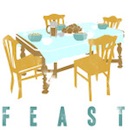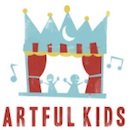Hospitality from the margins is a widow’s mite welcome, made abundant by its sacrifice. Perhaps it means simple spaces. Tuna sandwiches around an undressed card table. Popcorn and cocoa by candlelight. Makeshift beds on the floor of your dorm room. Family holidays open to those who are far from family. Hospitality that is “real and costly,”5 not because it required a $300 grocery bill, but because it came out of your poverty. Extravagant generosity with financial, physical, and emotional resources, regardless of the social standing of the guest.
All in Hospitality
Why We Gather
Now, after so many years in Nashville, my journals and photograph albums are full of the stories of these gatherings. I’ve come to see them as part of the significant work of my life. I have no guarantee they will ultimately have the effect I want them to. But what I suspect, and what I hope, is that the scents, flavors, often-used recipes, family chitchat, friends catching up, and the familiar stamp of the way things are done will seep in, helping to create a family identity and leave a heritage of belonging.
 The seating arrangement will be tricky, because some of these people are shy and will not be comfortable talking to strangers. They might feel uncertain about proper table manners or what to wear. They probably don’t get asked out much. But none of that matters. At this fantasy dinner party, every one of them will arrive with any fear in their hearts replaced with hope.
The seating arrangement will be tricky, because some of these people are shy and will not be comfortable talking to strangers. They might feel uncertain about proper table manners or what to wear. They probably don’t get asked out much. But none of that matters. At this fantasy dinner party, every one of them will arrive with any fear in their hearts replaced with hope. So we enter the swim of people, words, laughter, a table laden with desserts, the dusky scent of coffee steaming from the cup in my hand as familiar faces sift through the crowd. And amid the lovely clamor, I’m reminded that what we’re experiencing is something artists desperately need — this coming together, this connection. All art is a conversation. The artist of faith negotiates a rich and multifaceted dialogue with God, the work, and community.
So we enter the swim of people, words, laughter, a table laden with desserts, the dusky scent of coffee steaming from the cup in my hand as familiar faces sift through the crowd. And amid the lovely clamor, I’m reminded that what we’re experiencing is something artists desperately need — this coming together, this connection. All art is a conversation. The artist of faith negotiates a rich and multifaceted dialogue with God, the work, and community.Commonplace Cathedrals: the Architecture of Hospitality
Extravagant meals are neither possible nor advisable every single day. But there is a way to weave an everyday extravagance into our spaces; it depends not on expensive food and furniture but on sacrificial care. In a culture of perpetual indulgence and breakneck busyness, the less tangible resources, like time spent, convey the most meaning. A loaf of homemade bread. A simple centerpiece cut from local flora. A guest bed with turned-down sheets and freshly washed towels.
 We all contribute to dinner, and this tends to be my favorite part — us huddled in the kitchen to chop ingredients while talking over the week’s events. Often our time in the dining room lasts much of the evening, and this lingering always helps me to catch my breath. I’m consistently aware of how something as simple as laughter between good friends can melt away the stress of the day.
We all contribute to dinner, and this tends to be my favorite part — us huddled in the kitchen to chop ingredients while talking over the week’s events. Often our time in the dining room lasts much of the evening, and this lingering always helps me to catch my breath. I’m consistently aware of how something as simple as laughter between good friends can melt away the stress of the day.Celebrating 20 Years of Art House America
In late October and early November 2011 we celebrated Art House America’s twentieth anniversary. With three events — two in our home, the Art House, and one at The Village Chapel near downtown Nashville — we looked back over twenty years of Art House history; enjoyed amazing music, beautiful food, and the company of people from all eras of the Art House America story. Twenty years still seems quite extraordinary when we look back on our beginnings.
 Small things. Sweet tea and warm cookies. An Americano, fresh and local. Simple gifts with a profoundly Eucharistic quality. They are the work of another person’s hands; acts of attentiveness in the creation of a personal and communal experience. Simple gifts, but rich and nourishing.
Small things. Sweet tea and warm cookies. An Americano, fresh and local. Simple gifts with a profoundly Eucharistic quality. They are the work of another person’s hands; acts of attentiveness in the creation of a personal and communal experience. Simple gifts, but rich and nourishing. We had to be honest or risk sitting in awkward silence over tea or the next meal, or, God forbid, be reduced to mere small talk while cleaning bathrooms together. Because of these interpersonal hurdles that could only be cleared with grace and mercy, I felt a quiet confidence growing in me, and my ability to listen and tend to the needs of others broke away from my need to have control or be independent. This, we found in the end, is the real bread and butter of communal life — forced honesty and a corporate desire to do more than merely share space and chores kept gossip at bay and challenged us to speak truth in love.
We had to be honest or risk sitting in awkward silence over tea or the next meal, or, God forbid, be reduced to mere small talk while cleaning bathrooms together. Because of these interpersonal hurdles that could only be cleared with grace and mercy, I felt a quiet confidence growing in me, and my ability to listen and tend to the needs of others broke away from my need to have control or be independent. This, we found in the end, is the real bread and butter of communal life — forced honesty and a corporate desire to do more than merely share space and chores kept gossip at bay and challenged us to speak truth in love. In essence, this was why we met that day in my living room: because beauty matters to God and because, as the body of Christ, we testify to one another that God sees us, that our work matters.
In essence, this was why we met that day in my living room: because beauty matters to God and because, as the body of Christ, we testify to one another that God sees us, that our work matters.
There was some venting, yes; there was philosophy; but above all, there was connection. In the sprawling Dallas metroplex lined with suburban brick homes, school zones, and shopping centers, visual artists, musicians, and writers assembled. We peeked into the crevices of our landscaped society and found wildflowers.
 Nobody seems to know where the foolish word came from — a portmanteau of breakfast and lunch, obviously, but we don’t say lupper or dunch. Someone claims a reporter for the New York Morning Sun coined it in the early twentieth century as a way to describe the way a morning newspaper man ate: frenzied, I suppose, too busy to eat breakfast.
Nobody seems to know where the foolish word came from — a portmanteau of breakfast and lunch, obviously, but we don’t say lupper or dunch. Someone claims a reporter for the New York Morning Sun coined it in the early twentieth century as a way to describe the way a morning newspaper man ate: frenzied, I suppose, too busy to eat breakfast.
I gave up breakfast a long time ago, when I realized it just makes me hungry for lunch hours too early, but I think that portmanteau-inventing reporter and I, teaching college freshmen to wrangle words in the early mornings, are kindred souls.
 A bit heart-numb and recovering from new-artist-itis, I remember the surge of joy I felt at first seeing the Art House — church and gardens — place cultivated.
A bit heart-numb and recovering from new-artist-itis, I remember the surge of joy I felt at first seeing the Art House — church and gardens — place cultivated.Our initial conversations there left us feeling challenged and validated at the same time. It was as if something in the air transformed our weary stories of life on the road into stories of the blessing and stewardship of storytelling. I remember walking to the car after our first visit saying, ”I get it, I get it, I get it . . .”
 It inspires me to ponder the possibilities of our interactions with strangers outside of our social comfort zone. We could start by befriending and serving them, then really see our neighbors through art — perhaps by photography, recording or writing their stories, or making a short documentary film. Or we could simply talk with them, know who they are.
It inspires me to ponder the possibilities of our interactions with strangers outside of our social comfort zone. We could start by befriending and serving them, then really see our neighbors through art — perhaps by photography, recording or writing their stories, or making a short documentary film. Or we could simply talk with them, know who they are. One of the places I felt most welcome in Canada was church. After leaving our first church in Ontario, we attended four different churches over seven years, but I felt at home in all of them in different ways. In all of those churches, worship included singing songs from all over the world, and we often sung in different languages. I heard the story of a world promised to us, where all people have a home and family.
One of the places I felt most welcome in Canada was church. After leaving our first church in Ontario, we attended four different churches over seven years, but I felt at home in all of them in different ways. In all of those churches, worship included singing songs from all over the world, and we often sung in different languages. I heard the story of a world promised to us, where all people have a home and family.Learning to Cook, and Why it Matters
Learning to cook has opened the door to a more flourishing life. Through cooking, I've learned to comfort, celebrate, care for the sick, create traditions, welcome loved ones and strangers, and create environments for relationships to grow. Cooking has a power that goes beyond meeting our basic need for food. Creating good food and welcoming tables speak to the deepest parts of our being. We are created to live artfully in daily life, to need real food to nourish our bodies, to have tables at which to belong, and to have stopping places where we can know and be known.
 What she said that day gave me freedom and permission to look into the eyes of a friend and see a painting in progress, to be surprised by the melodies of memories triggered at perfect moments, to tease out the poetic rhythms of any given day. I began to realize that while many of my friends make art with guitars or paintbrushes, my preferred medium is the fabric of human relationships: making lasting connections between people and seeking to illuminate the image of God that each person bears.
What she said that day gave me freedom and permission to look into the eyes of a friend and see a painting in progress, to be surprised by the melodies of memories triggered at perfect moments, to tease out the poetic rhythms of any given day. I began to realize that while many of my friends make art with guitars or paintbrushes, my preferred medium is the fabric of human relationships: making lasting connections between people and seeking to illuminate the image of God that each person bears.The Gift
The young woman sitting next to me in the Denver airport gripped the grande cup of hot Earl Grey I had just purchased for her. Her name was Marta. She was seventeen, an exchange student from the Ukraine on her way back to Eugene, Oregon, for a few days of debriefing before heading home. She had spent the last year of high school with a host family in Minneapolis where I’d just attended a conference. Her wide brown eyes and long, thin legs gave her the look of a fawn — a frightened, waif-like creature. She also had a nasty cold that I did not want to catch.
 When we first started talking about an Art House Dallas launch, we knew it needed to include three aspects: good food, live music, and opportunities to gather our Dallas friends for meaningful conversations. We imagined a handful of Dallas artists and Art House America supporters would meet together for a couple of hours to talk about what it looks like to live an “artful life.”
When we first started talking about an Art House Dallas launch, we knew it needed to include three aspects: good food, live music, and opportunities to gather our Dallas friends for meaningful conversations. We imagined a handful of Dallas artists and Art House America supporters would meet together for a couple of hours to talk about what it looks like to live an “artful life.” It was a gala affair, not only because we’d been gone for so many weeks and reunions were in order, but because it was the October birthday celebration of both of the wives of our triumvirate of couples. With my husband’s gracious permission and assistance, I went all out: a champagne toast; artichokes with lemon-thyme butter for a first course; the loveliest cut of tenderloin; the ripest, richest Bordeaux; the most jubilantly-English flavors of Stilton and Cheshire for the cheese course; and a silver compote of succulent dried apricots and dates to follow it ‘round the table.
It was a gala affair, not only because we’d been gone for so many weeks and reunions were in order, but because it was the October birthday celebration of both of the wives of our triumvirate of couples. With my husband’s gracious permission and assistance, I went all out: a champagne toast; artichokes with lemon-thyme butter for a first course; the loveliest cut of tenderloin; the ripest, richest Bordeaux; the most jubilantly-English flavors of Stilton and Cheshire for the cheese course; and a silver compote of succulent dried apricots and dates to follow it ‘round the table.
And the pièce de résistance: an absolutely decadent steamed ginger pudding that had been simmering maddeningly away on the back burner all afternoon in a little antique mold. If I’ve ever been proud of anything in my life, it was that pudding.
Creative Community for the Common Good
A few weeks back I was privileged to sit with trustworthy friends and wrestle, yet again, to find the smallest, most potent words to describe what Art House means. This kind of exercise has played out many times in the last twenty years. We’ve been trying to put our vision into words since we first imagined the place and purpose that became The Art House home in Nashville, and our non-profit, Art House America. As we like to say, the name Art House designates place, while Art House America is an organizational title.





















